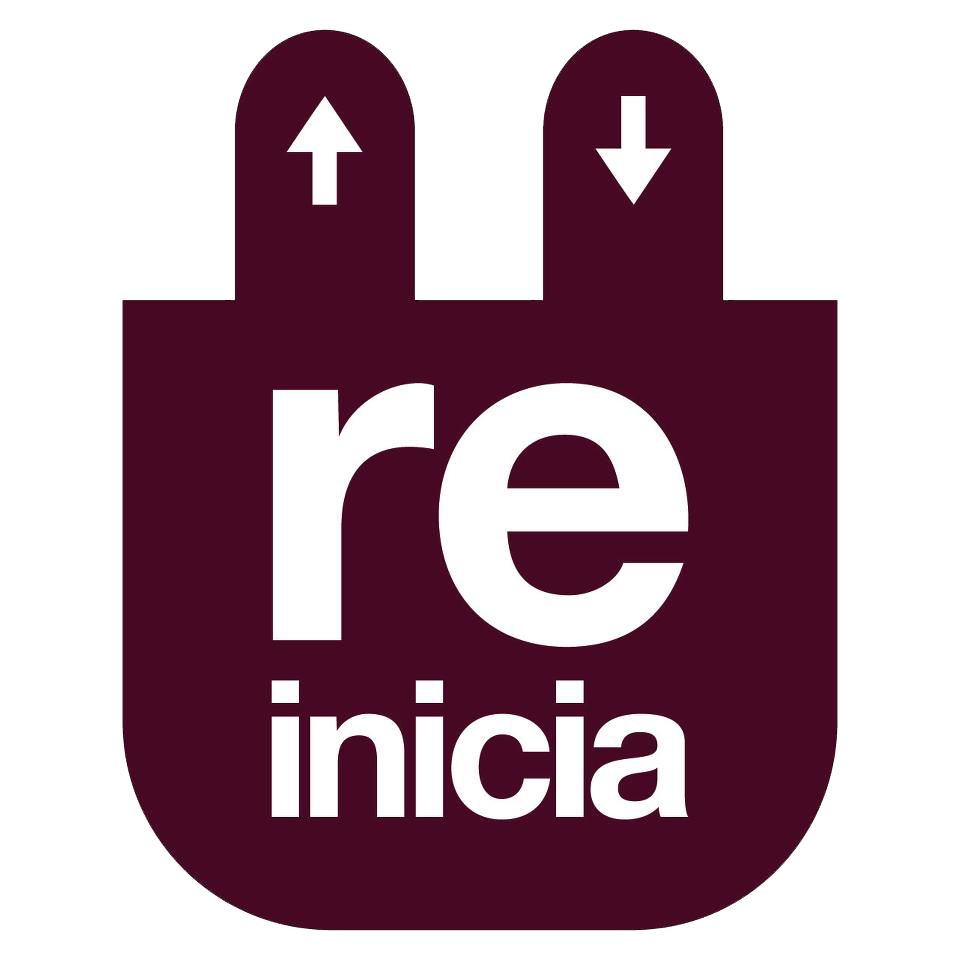Fiber optic cabling, AV boxes, and Press Splitters: these are audiovisual equipment suitable for hospital environments. Hospitals are technologically advanced ecosystems where real-time communication is essential. From the transmission of IP video signals for internal use between professionals to the message delivered from the hospital to the general public through press rooms, these are activities that are important in the overall functioning of a healthcare environment today.
IP video in hospitals, transmission by optical fiber
The use of IP video in hospitals has grown considerably, and the use of fiber optics for transmission makes the system secure and versatile for the present and future.
Fiber optic cabling connects operating rooms, patient monitors, and telemedicine rooms. Leveraging the benefits of fiber optics allows for certain aspects to be controlled:
- The image quality requirements (current and future) of video signals that may be required in an operating room or ICU. These are high-bandwidth signals that require a specific speed, and fiber optics meet these needs.
- The ability to transmit over long distances without signal degradation. This is very important in large hospitals where IP video equipment must cover large areas, from emergency rooms to operating rooms or even satellite clinics.
- Immunity to electromagnetic interference. Hospitals are full of electronic equipment such as X-ray equipment, medical monitors, etc., which could generate interference in a signal transmitted over copper wiring. Fiber optics are free from these potential electromagnetic interferences.
- Less space and greater durability. Fiber optics take up less physical space and are lighter than copper cabling. Space management is crucial in a hospital: facilities must be kept tidy and free of bulky cabling. In addition, fiber optics are more durable and less prone to damage.
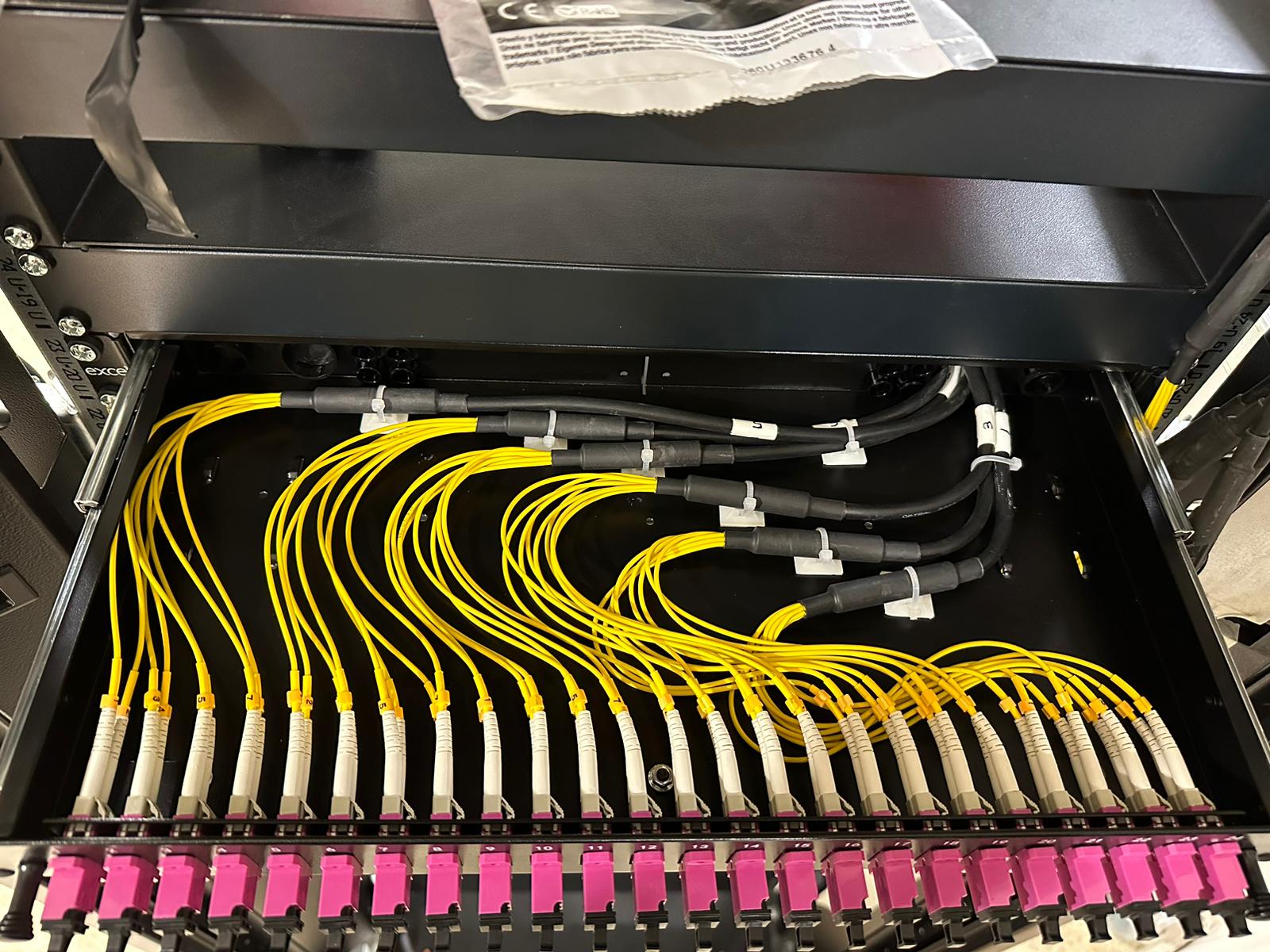
Photo: Pínanson fiber optic cabling installed by Ditec (a company specializing in hospital environments)
AV boxes, adapted and resistant enclosures
The hospital environment requires handling images and videos both so that professionals can perform their work and so that patients can obtain more visual information. All these connections in waiting rooms, teleconference rooms, or press rooms must be integrated into the building, taking up as little space as possible and maintaining the organization and order required in a hospital.
The AV boxes, custom-designed and manufactured for hospitals, are designed to house encoders, decoders, and signal extenders, and to maintain, in a closed environment (with a cover), the connection panels for transmitting these types of signals.
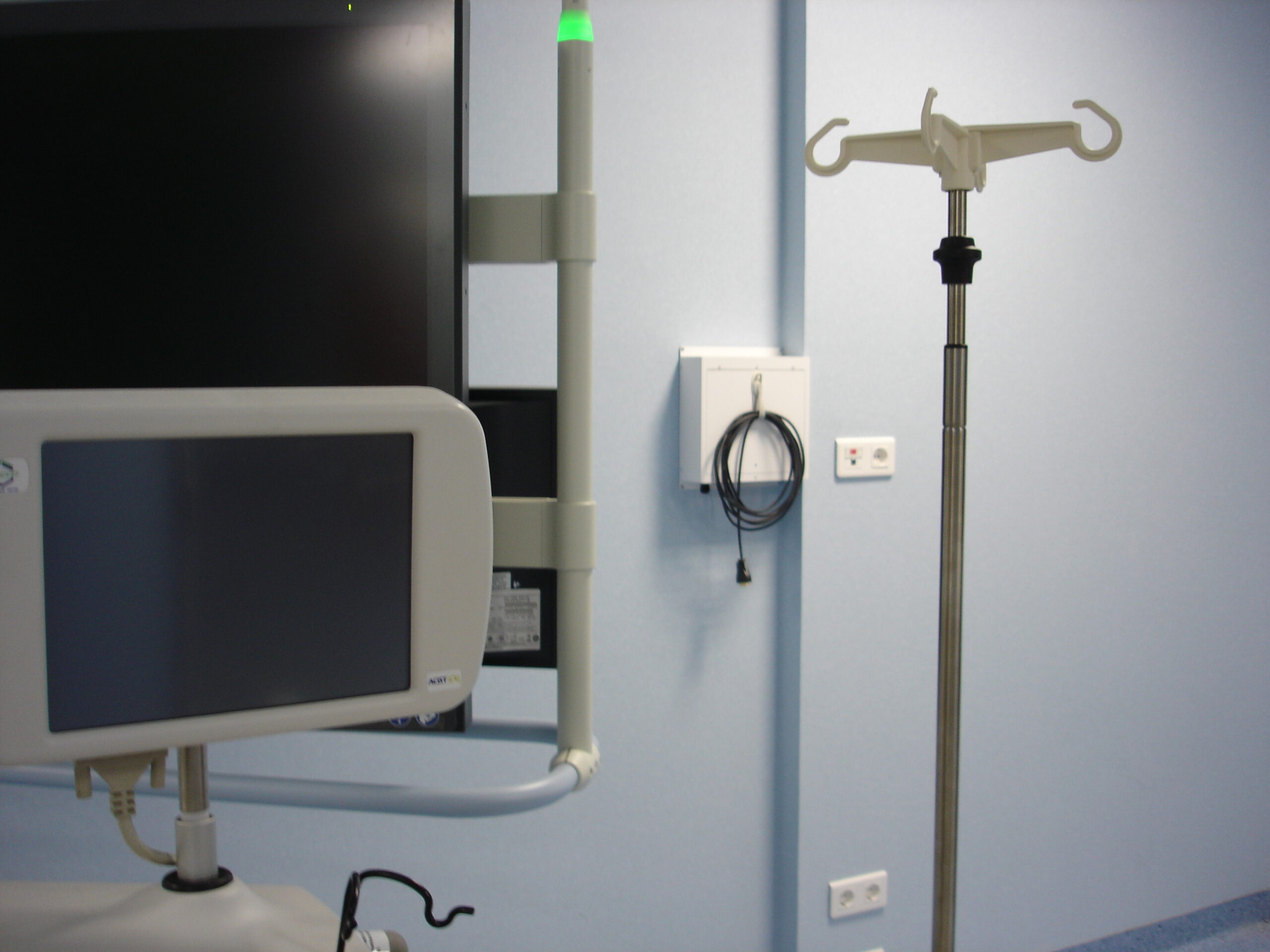
Photo: Hospital room
The material used to make these boxes also needs to be durable and low-maintenance to withstand constant use, withstanding exposure to disinfectants as well as changes in temperature or humidity, reducing the need for frequent maintenance.The material used to make these boxes also needs to be durable and low-maintenance to withstand constant use, withstanding exposure to disinfectants as well as changes in temperature or humidity, reducing the need for frequent maintenance.
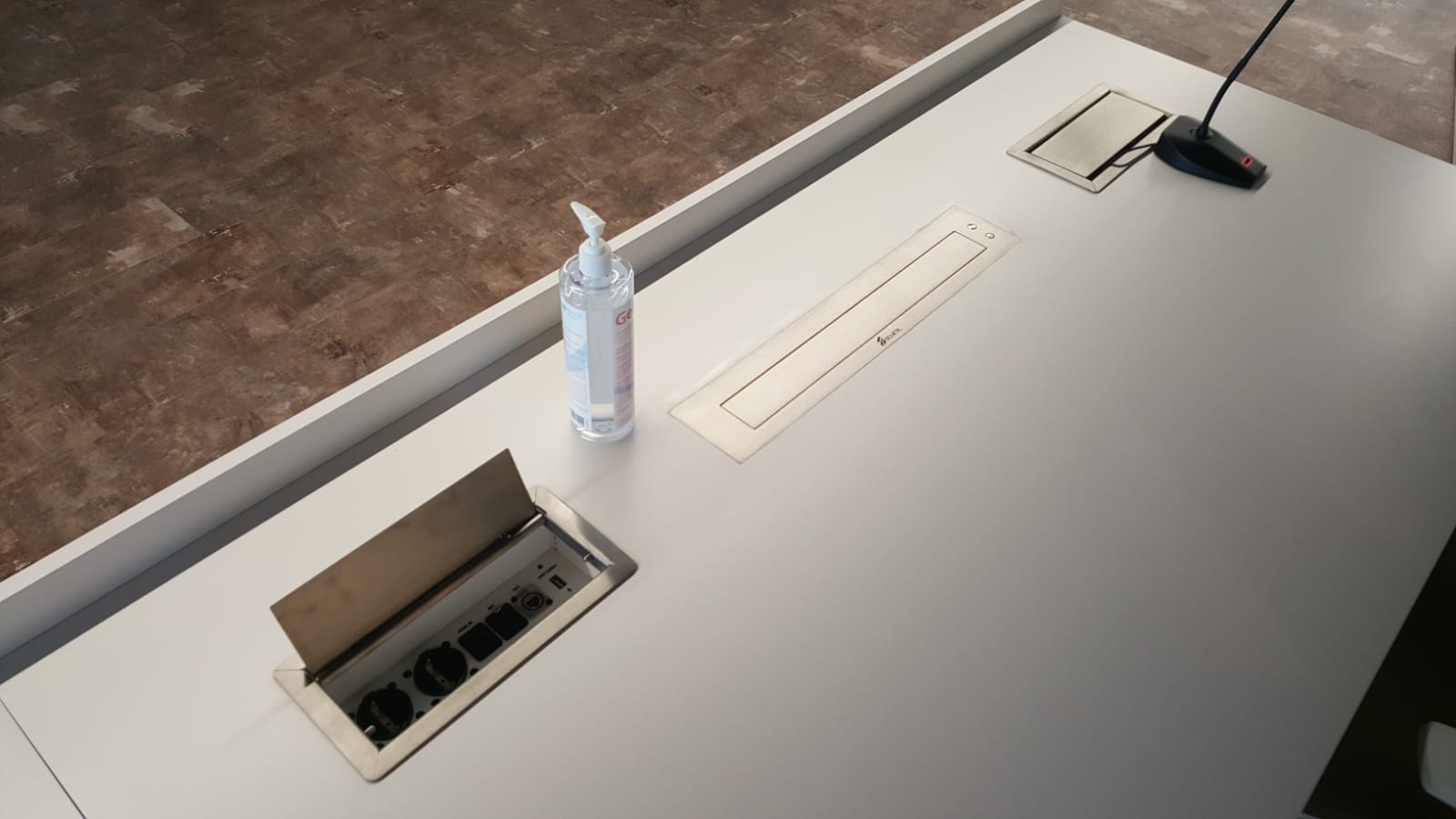
Photo: View of the speakers’ table in the press room at Isabel Zendal Hospital. Pinanson audiovisual cabinet built into the table.
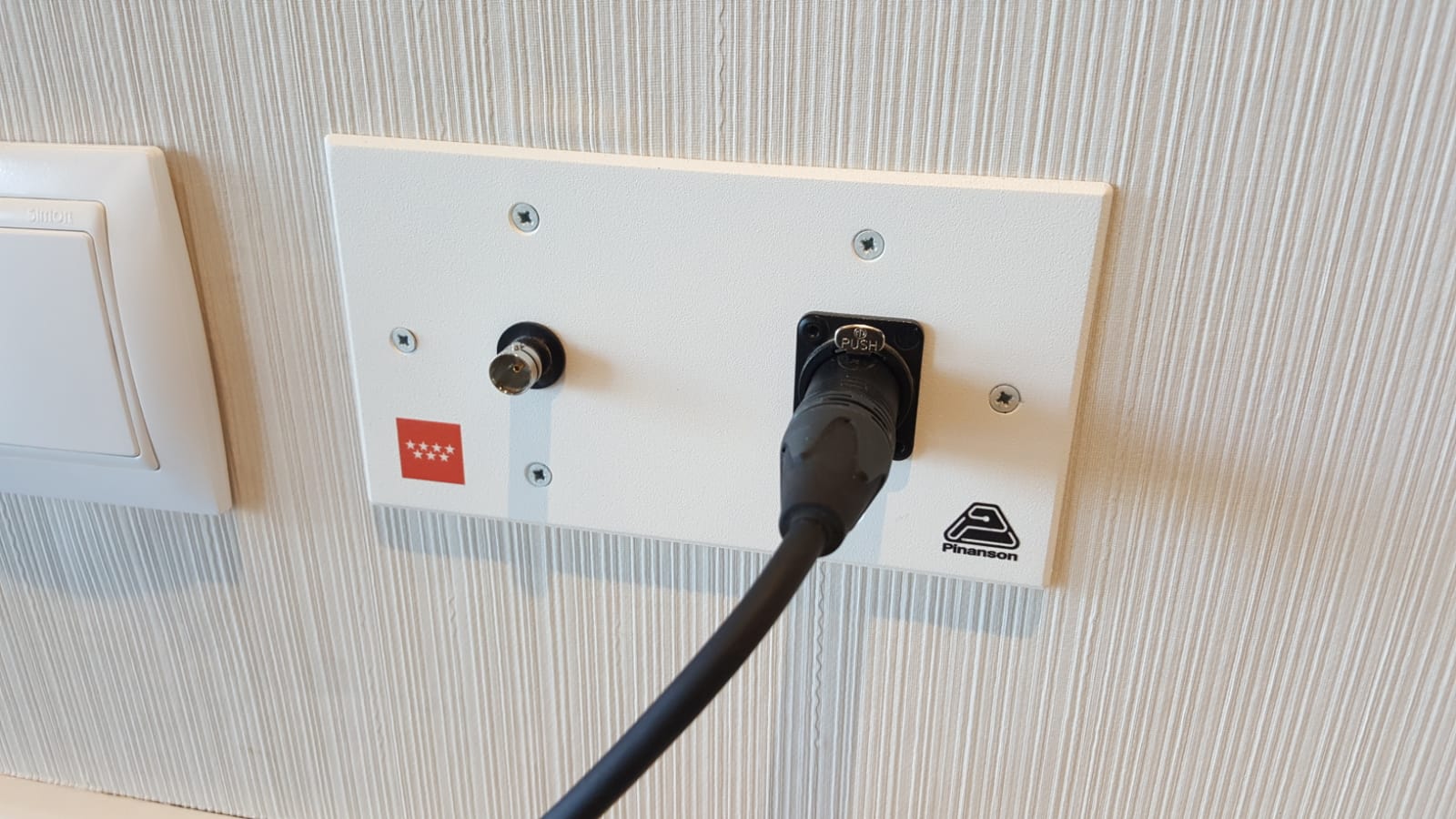
Photo: Pínanson Wall Plate installed at Isabel Zendal Hospital, Madrid
Hospital press conferences
Hospitals are an essential source of information for keeping the population up-to-date (we will all always remember the COVID-19 pandemic and the media outpouring it experienced worldwide).
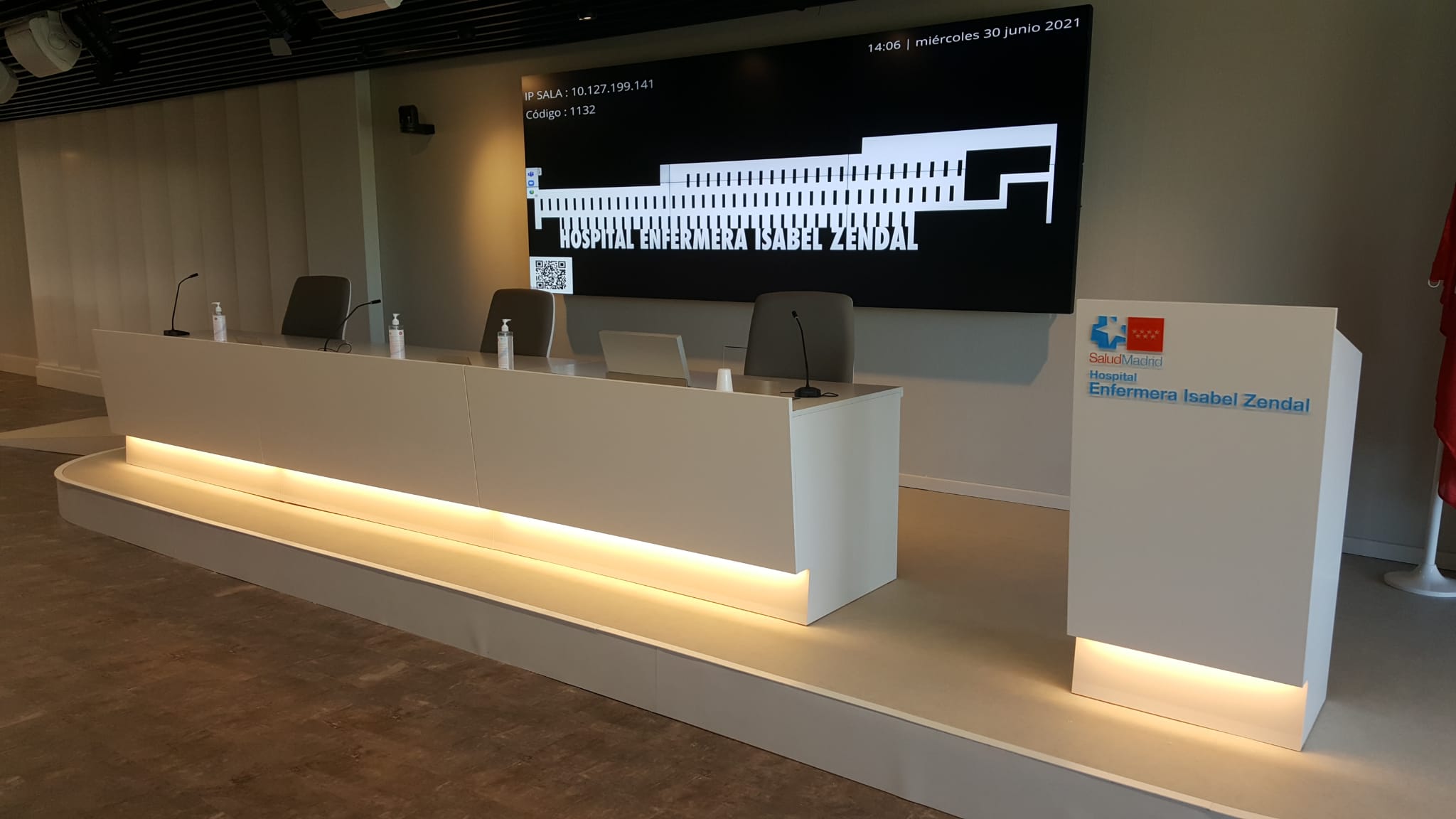
Photo: Press room at Isabel Zendal Hospital in Madrid
Announcing advances in treatments, reporting on crises or emergencies, clarifying rumors, explaining public health programs, or sharing medical success stories… there’s a lot of news coming from hospitals, and, as with any other setting, the public needs to be informed through the media.

Photo: Press room at Isabel Zendal Hospital in Madrid
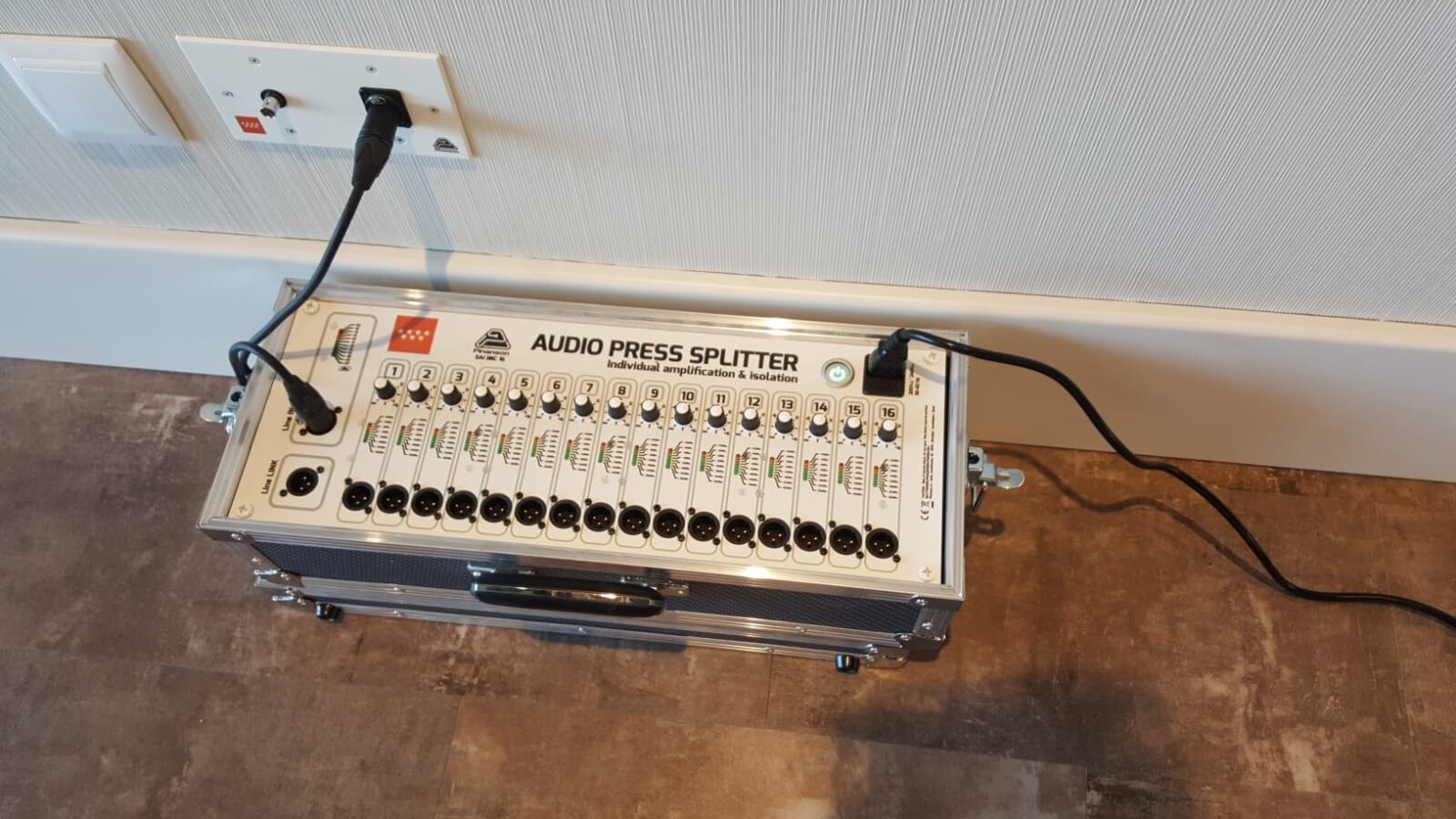
Photo: SAI IT IMC 16 splitter for the press room of the Isabel Zendal Hospital in Madrid.
These press rooms are just another press room: one or more speakers deliver information to the press, which in turn records or broadcasts live to the public. Therefore, they must have the same audiovisual equipment as any other press room to ensure effective communication and to ensure the hospital’s message is conveyed correctly and seamlessly through the press.
An audiovisual system that includes microphones, speakers, a mixing console, screens and projectors, and an audio (and sometimes video) signal distribution system through which the hospital press room generates a single signal that will be shared by all press.
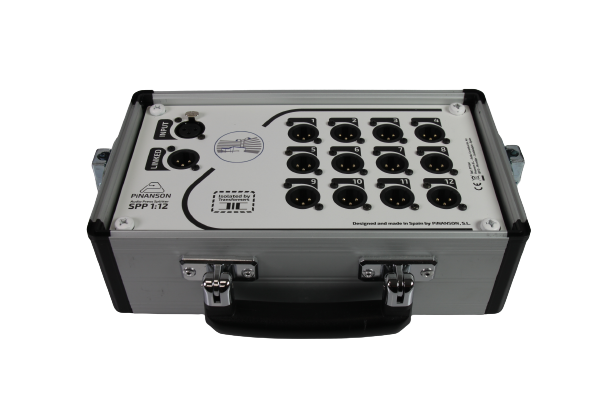
hoto: Splitter SPP 12 for the press room of the Torrecardenas University Hospital in Almeria.
Audiovisual connectivity, something invisible to patients
Connectivity in hospitals, often invisible to patients, is a fundamental pillar for good communication inside and outside the hospital. The quality, reliability, and adaptability of cabling systems, audiovisual boxes, and splitters allow medical teams and communications professionals to transmit information effectively and securely. In a hospital, where every second counts, having an invisible yet robust connectivity infrastructure is essential to ensure a clear, rapid, and uninterrupted flow of information.
Do you want to learn about Pinanson products for hospitals?





